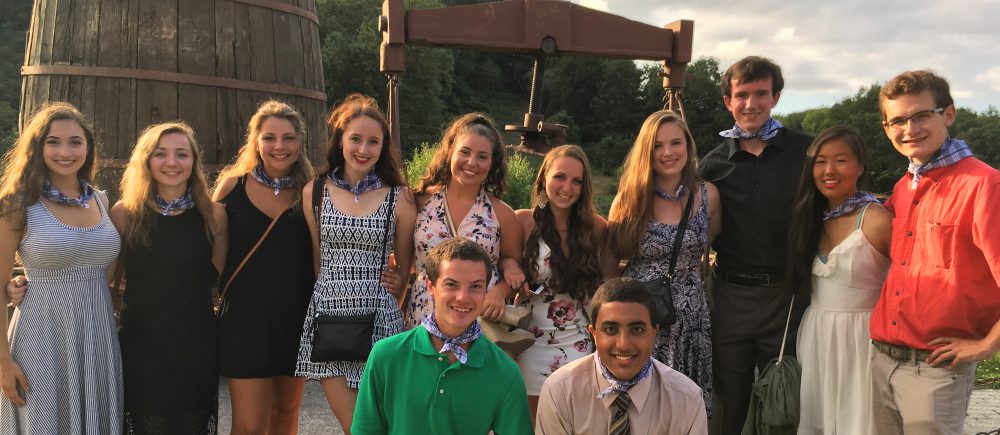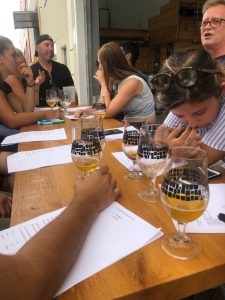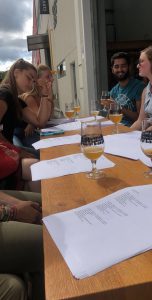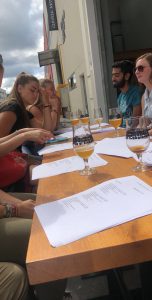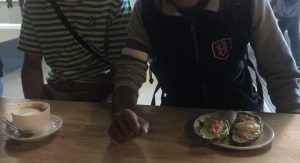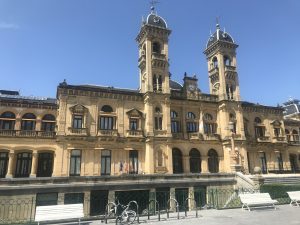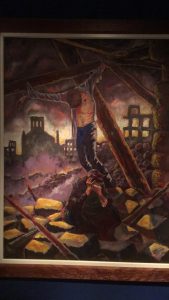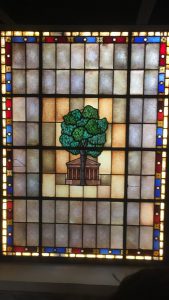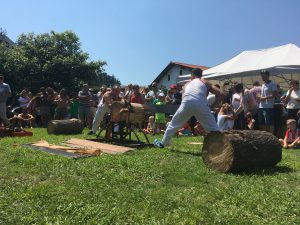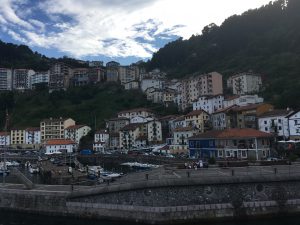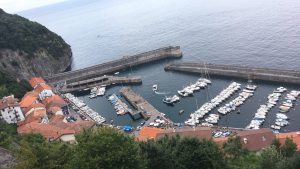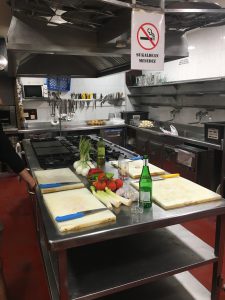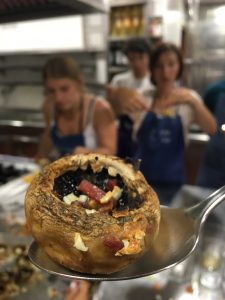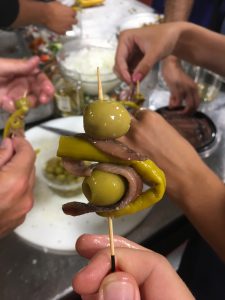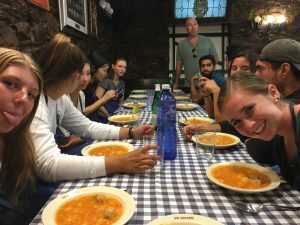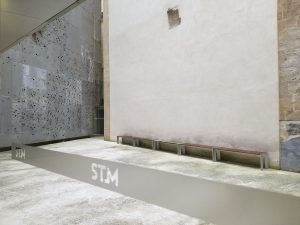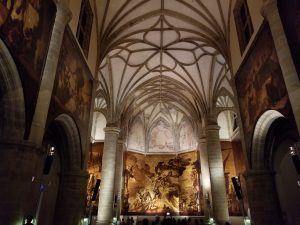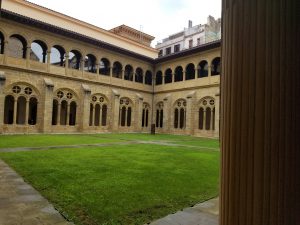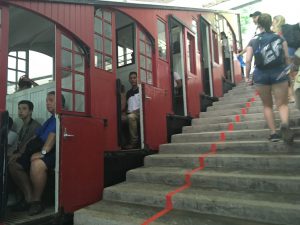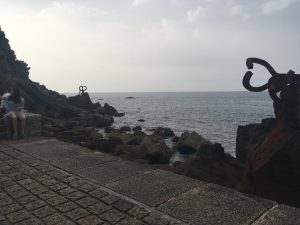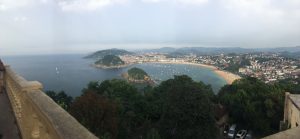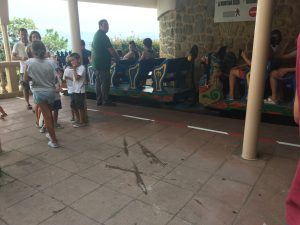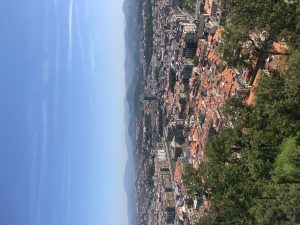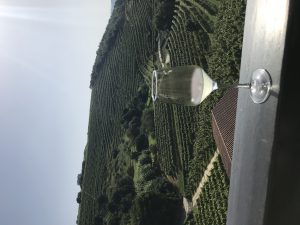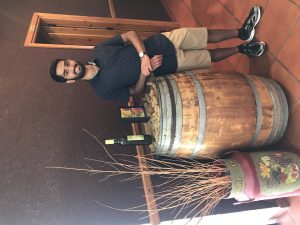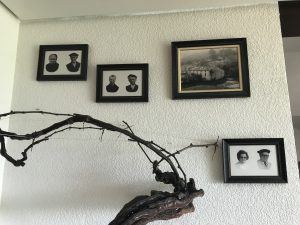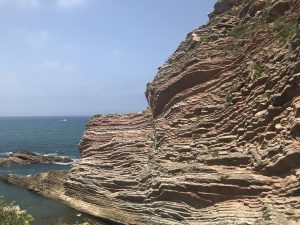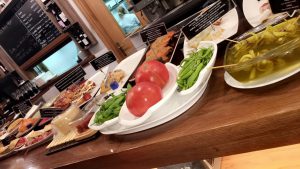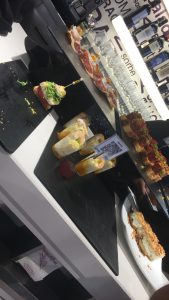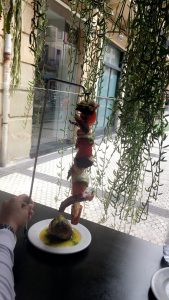Three weeks gone and our time together in San Sebastian is drawing to a close. With a handful of hours to our final sunset, we eat our last bocadillos and sip just one more cortado, hoping beyond all else that we took enough time to fall in love with the city we have come to know so well. With our last Spanish class finished, we claim our certificates and start on the goodbyes – of which there will always be too many – to our fellow classmates and companions. We rummage through pockets of loose change and bank notes, receipts and forgotten drink tickets, wondering if these crumbs from our adventures here will suffice as proof: that the city is real and we lived in it, not just some strange and wonderful place in our heads.
It only seems fitting that we met for the final time here around the dinner table, where the Basque people live their lives. Having spent our siesta in a frenzy, revisiting the best of the best pintxo bars and savoring our favorites, some feared the impending supper. Yet, we arrived at La Txuketeria del Iraeta last night dressed in our best and hungry for more – not just for more of the exceptional cuisine we’ve become so accustomed to, but for more time to see that which has still evaded our eyes in the city.
Huddled together in the back of the restaurant, we were treated to a meal perfectly indicative of the Basque culinary culture; with many dishes and few ingredients, the meal never appeals to a spectacle, but instead celebrates the quality of ingredients, the expertise behind their preparation, and the tradition of people coming together to eat. Over tomato salad in olive oil, roasted peppers, and txuleta – a massive and succulent cut of steak – we dined long and pushed the limits of our stomachs once more. The food, like much else in the city, reminds us to take note of the simple pleasures, to enjoy not that which demands to be enjoyed but that which needs not ask.
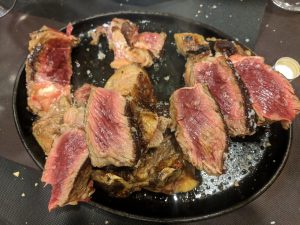
Accompanying the meal was a good plenty of bottles of cider, with which we raised our glasses in celebration. First, to Julian, for sharing with us this beautiful city and his sense of wonder for it. Then, to our foreign friends with whom we’ve shared food, drink, language, and experience over these past three weeks. From them, we have learned an important lesson in the universality of our lives; to meet someone born thousands of miles away from you and to then, through knowing them, know yourself is a powerful perspective. Our toast to them was a toast to the things we share and the ways we differ, to the threads of love, loss, and indefinite futures that ran through every late night conversation. These are lessons and friends that we will now carry with us always.
The final toast was, strange as it may seem, to ourselves. Whether meeting for the first time, reuniting, or even discovering fateful connections between us, our group came together to know one another, all so far from home. Now, as we leave the temporary home this city has become for us, it seems our mostly functional little family is seeing its end only just as it has begun. This toast is perhaps the hardest to make, for as we bid adieu to each other, so do we leave behind the selves that this city has known us by. The people we were for these three weeks will forever be trapped in an elsewhere – free from the threats of tragedy and temporality, stagnation and sublimation – they’ll remain here, in this Donostia August, this strange little world we’ve dreamt up together.
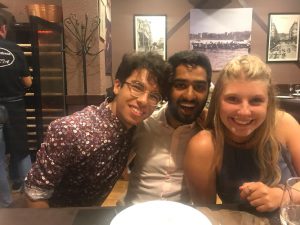
Outside my window are the sounds of the construction, cars, and train station below. However, these are not the sounds by which I’ll remember San Sebastian. Instead, I’ll remember the laughter and lively conversation around the dinner table, the scraping of silverware and the clinking together of cider glasses in celebration. In the few hours we ate dinner together you can find the spirit of all our time here: the sharing of plates, of stories, of newfound sights and feelings.
As I stuff clothes into luggage, stowing away bottles of txacoli for friends and family, I find myself wishing for a way to zip up the city and carry it through airport security, a way to share with those I love back home what I have shared with my new friends here. At least, could I bottle up the sunset? I suppose not. But I can enjoy it with these friends, one last time.
Luego, Donosti. Eskerrik asko.
